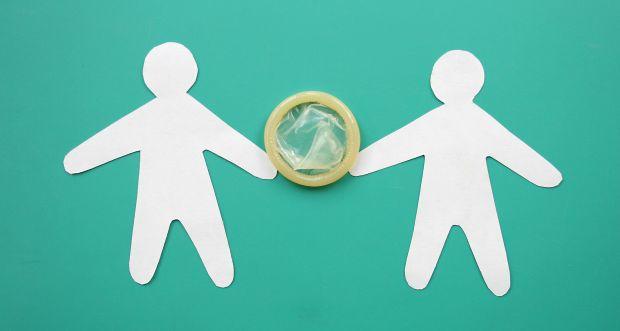Introduction: In the complex landscape of sexual health, condoms stand out as an essential tool in preventing the transmission of sexually transmitted infections (STIs) and sexually transmitted diseases (STDs). This comprehensive guide takes a closer look at the crucial role condoms play in protecting sexual health, debunking myths, exploring their mechanism, and understanding their effectiveness.
Introduction:
In the complex landscape of sexual health, condoms stand out as an essential tool in preventing the transmission of sexually transmitted infections (STIs) and sexually transmitted diseases (STDs). This comprehensive guide takes a closer look at the crucial role condoms play in protecting sexual health, debunking myths, exploring their mechanism, and understanding their effectiveness.
1. Dispelling Myths: Separating Fact from Fiction
Before delving into the mechanics and effectiveness of condoms, it’s imperative to dispel common myths that surround their use. Misconceptions about condom effectiveness, breakage rates, and overall reliability often contribute to misinformation. Let’s separate fact from fiction, providing clarity to ensure informed decision-making about this integral aspect of sexual health.
One prevalent myth is the belief that condoms are not effective in preventing the transmission of STIs. The reality is that when used consistently and correctly, condoms are highly effective at reducing the risk of STI transmission, including HIV.

Image by: https://www.houseofwellness.com.au/uncategorized/painful-sex
2. Understanding the Mechanism: How Condoms Work
Condoms act as a physical barrier, preventing direct contact between genital areas and bodily fluids. Typically made of latex, polyurethane, or polyisoprene, condoms serve as a protective layer. Latex condoms are the most widely used, but alternatives like polyurethane and polyisoprene cater to those with latex allergies.
Understanding the mechanism is crucial for appreciating how condoms provide a robust defense against STIs. The impermeability of the condom material creates a barrier that significantly reduces the risk of transmission during sexual activity.
3. Condom Effectiveness: Numbers and Realities
The effectiveness of condoms varies depending on the type of STI. According to studies, condoms are approximately 98% effective in preventing HIV transmission. For other common STIs like gonorrhea and chlamydia, their effectiveness ranges from 70-90%. It’s essential to acknowledge that no preventive method is foolproof, and consistent and correct condom use is crucial for maximizing effectiveness.
Informative Table: Condom Effectiveness Against Common STIs
| STI | Condom Effectiveness (%) |
|---|---|
| HIV | 98% |
| Gonorrhea | 70-90% |
| Chlamydia | 70-90% |
| Herpes | 30-50% |
| Syphilis | 50-70% |
4. Beyond Pregnancy Prevention: The Holistic Role of Condoms
Condoms are not only effective contraceptives but also play a pivotal role in preventing a broad spectrum of STIs. While they are often associated with preventing unintended pregnancies, recognizing their dual benefit in protecting against STIs broadens their significance in sexual health. Their role is crucial in promoting holistic well-being and fostering responsible sexual practices.
5. Types of Condoms: Choosing the Right Fit
Not all condoms are created equal. Understanding the different types of condoms allows individuals to make informed choices based on their preferences and needs. Latex, polyurethane, polyisoprene, and lambskin are among the available options, each with its unique characteristics. Choosing the right fit ensures both effectiveness and comfort during use.
Comparative Table: Types of Condoms
| Type | Material | Benefits | Considerations |
|---|---|---|---|
| Latex | Natural rubber | Widely available, effective | Not suitable for those with latex allergies |
| Polyurethane | Synthetic material | Suitable for latex-sensitive individuals | May be less elastic than latex |
| Polyisoprene | Synthetic latex alternative | Combines the best of latex and polyurethane | Slightly less elastic than latex |
| Lambskin | Natural membrane | Natural feel | Not effective against all STIs, not suitable for latex allergies |
6. Safe Practices: Correct Condom Use
The effectiveness of condoms is closely tied to their correct and consistent use. Proper application, secure storage, and ensuring adequate lubrication are essential aspects of condom use. This section guides individuals through the best practices for putting on, using, and disposing of condoms, enhancing their effectiveness and contributing to a positive sexual experience.
Conclusion: Empowering Sexual Health
As we conclude our exploration of condoms in the spectrum of STI/STD prevention, it becomes evident that these barriers are not merely tools for contraception but powerful instruments in promoting sexual health. Dispelling myths, understanding their mechanism, and acknowledging their broader benefits empower individuals to make informed choices, fostering a sense of responsibility and control over their sexual well-being.
Condoms, as a symbol of conscious decision-making, contribute significantly to preventing the spread of STIs and ensuring safe and consensual intimate encounters. By embracing their role in sexual health, individuals can navigate the complexities of relationships with confidence, promoting not only their well-being but also that of their partners. Beyond barriers, condoms stand as guardians of both physical and emotional health, offering a vital layer of protection in the intricate tapestry of human relationships.

















Leave a Comment
Your email address will not be published. Required fields are marked with *